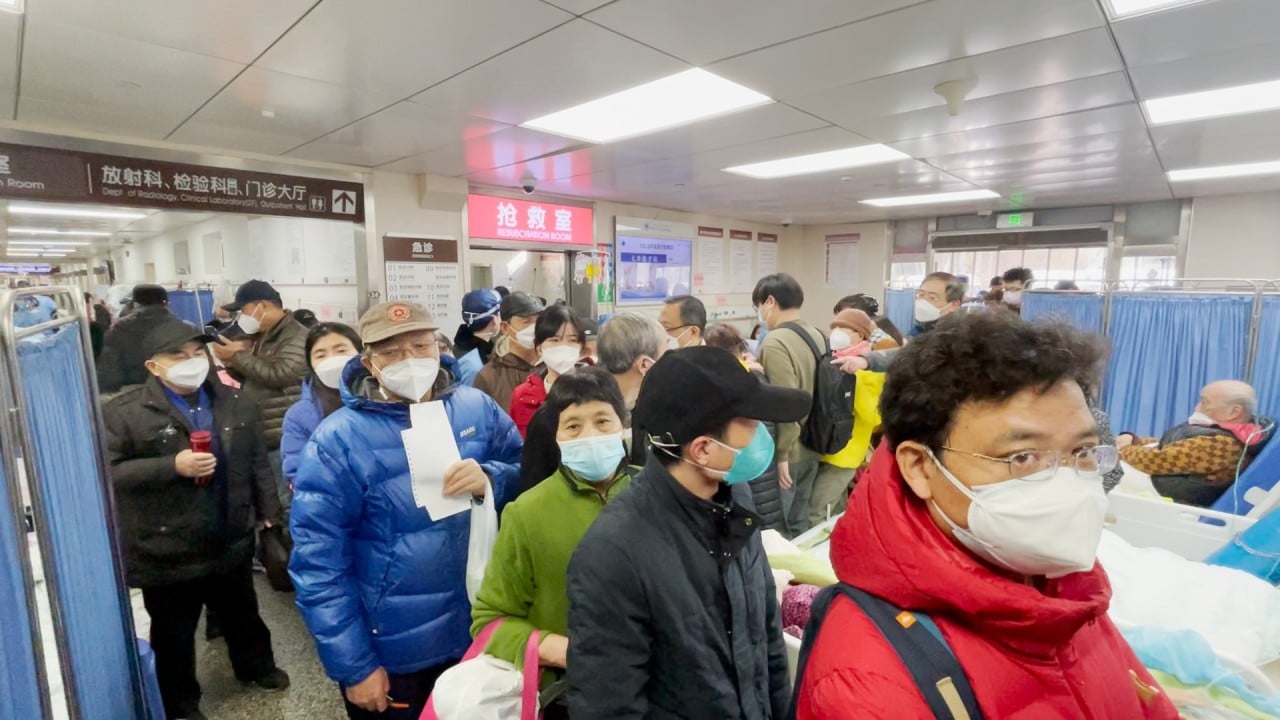
Chinese state media admit ‘different views’ on zero-Covid, say policy shift long in the making
- Communist Party mouthpiece recounts slew of meetings on strategy, challenging narrative that Beijing was unprepared for pandemic pivot
- The article comes amid mounting grievances over medication shortages and crowded hospitals as Omicron rips through Chinese population
Beijing has challenged the narrative that its pandemic policy shift was poorly planned while also striking a conciliatory tone by acknowledging “different views” about the zero-Covid strategy.
On Monday, the website of People’s Daily, the mouthpiece of the Communist Party, carried an article of more than 9,000 words explaining Covid-19 policy discussions from November 10.
There was no better time to reopen China after zero-Covid: top adviser
The group was led by Zhang Boli, a traditional Chinese medicine expert with the Chinese Academy of Engineering, and Shen Hongbing, director of the Chinese Centre for Disease Control and Prevention, and included eight frontline medical workers.
“There’s no ready answer to the unprecedented coronavirus pandemic,” the article said. It did not describe what was said at the meetings in detail but underscored the importance of broad consultations in scientific decision-making.
According to the article, the meetings “sent a clear message” that China was about to adjust its policy as vaccination rates improved and the pathogenicity of Omicron waned.
It said the policy shift was based on the knowledge that Omicron spread quickly and most cases were mild or asymptomatic, as top leadership had learned from last year’s outbreaks in Hong Kong, Shanghai, Urumqi and other cities.
Over 90 per cent of the Chinese population has received two doses of a vaccine, the article said, without mentioning the vaccination rate among vulnerable groups.
As of December 14, just 86.6 per cent of people aged 60 and above were fully vaccinated with two jabs, barely changed from 85.6 per cent in August.
Only 69.8 per cent of people aged 60 or over had received three doses of a Covid-19 vaccine, while just 42.4 per cent of those aged 80 and over had received three shots, official data showed.
On the eve of the policy adjustment, Xi chaired a Politburo meeting and urged better coordination of “Covid control and economic and social development”, paving the way for optimisation of the policy, the article said.
The next day, China announced that it would dismantle most of its Covid control mechanisms, abandoning requirements ranging from PCR tests to health code apps to access most public spaces.
More than 1,000 Weibo accounts banned over China’s Covid policy criticism
Since the policy change, the central and local governments have worked to support the expansion of intensive care units, treat severe cases, arrange supplies of medications and accelerate vaccination, according to the article.
“We have now entered a new phase of Covid response where tough challenges remain. Everyone is holding on with great fortitude, and the light of hope is right in front of us,” it said, quoting Xi’s New Year’s speech.
China has recorded only 22 Covid-19 deaths since December under a narrow definition of such fatalities, prompting the World Health Organization to warn that Beijing was undercounting the deaths.
British science data firm Airfinity predicted Covid-19 infections in China would reach their first peak on January 13 with 3.7 million cases a day. Deaths are projected to peak 10 days later at around 25,000 a day, which would bring the total to 584,000 since the virus began surging across the country in December.



